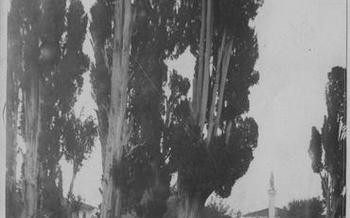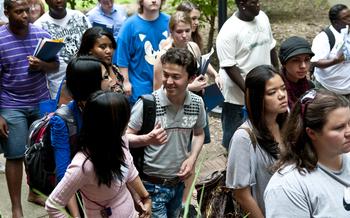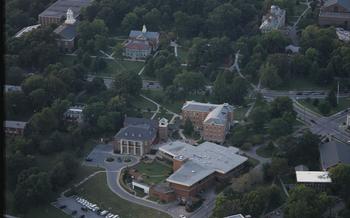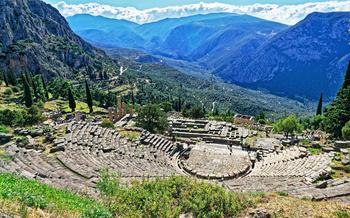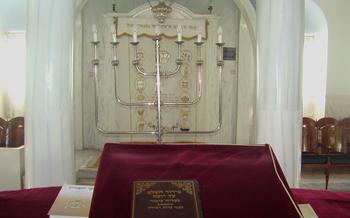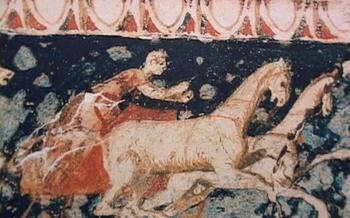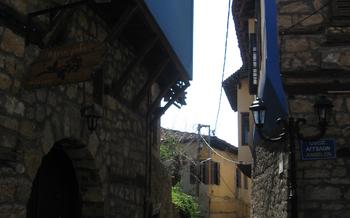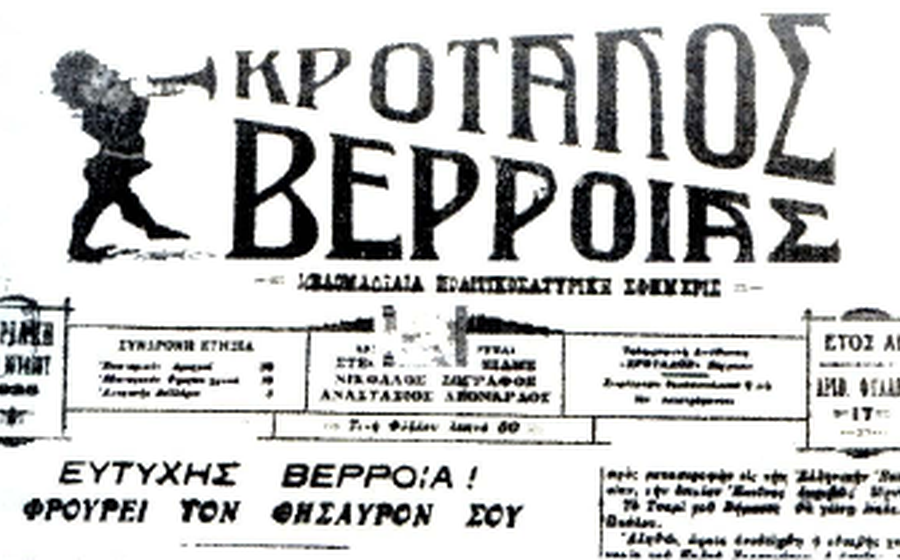
Veria's Roman Aqueduct
- Veria's Roman Aqueduct: A Legacy of Ancient Engineering
- Navigating to the Roman Aqueduct
- Exploring the Aqueduct's Surroundings
- Tips for Visiting the Aqueduct
- Historical Significance of the Aqueduct
- Architectural Marvels of the Aqueduct
- Witnessing the Aqueduct's Resilience
- Unveiling the Secrets of the Aqueduct
- Immersing in the Local Culture
- Veria's Archaeological Treasures
- Byzantine Churches and Monasteries
- Mount Vermio's Natural Wonders
- Veria's Culinary Delights
- Insider Tip: Off-the-Beaten-Path Gems
Veria's Roman Aqueduct: A Legacy of Ancient Engineering
Veria's Roman Aqueduct stands as a testament to the ingenuity and engineering prowess of the ancient world. Constructed during the Roman Empire's rule over Greece, the aqueduct served as a crucial infrastructure project, providing a reliable water supply to the city of Veria and its surrounding areas.
The aqueduct's origins can be traced back to the 1st century AD, when the Romans recognized the need for a sustainable water source for the growing city. With meticulous planning and skilled craftsmanship, they embarked on the ambitious project of constructing an aqueduct to channel water from the nearby mountain springs to Veria's urban center.
The aqueduct's architectural design showcased the Romans' mastery of engineering. Built using locally sourced stone, brick, and mortar, the structure featured a series of arched spans supported by sturdy buttresses. This ingenious design allowed the aqueduct to withstand the weight of the flowing water and the challenges of the region's seismic activity.
The aqueduct's construction not only ensured a continuous supply of fresh water to Veria's inhabitants but also played a vital role in the city's economic development and prosperity. The reliable water source supported various industries, including agriculture, trade, and manufacturing, contributing to Veria's growth as a thriving regional center.
Navigating to the Roman Aqueduct
The Veria's Roman Aqueduct stands as a proud testament to ancient engineering, inviting visitors to delve into its historical significance and architectural marvels. Located in the heart of Veria, the aqueduct is easily accessible by various means of transportation.
For those arriving by car, ample parking facilities are available in the vicinity, ensuring a hassle-free visit. Alternatively, public transportation offers a convenient option, with buses regularly stopping near the aqueduct.
For a more immersive experience, visitors can opt to walk or bike to the site. The picturesque streets of Veria, lined with traditional shops and cafes, provide a delightful ambiance as you make your way towards the aqueduct.
Whether you choose to drive, take public transportation, or embark on a leisurely walk, the Roman Aqueduct awaits your exploration, offering a glimpse into the ingenuity and craftsmanship of ancient civilizations.
Exploring the Aqueduct's Surroundings
The Veria's Roman Aqueduct offers a unique opportunity to delve into the city's rich past while immersing in its present-day charm. From the aqueduct's vantage point, visitors are treated to sweeping views of Mount Vermio's verdant slopes and the city of Veria sprawling beneath, with its red-tiled roofs and bustling streets. The surrounding area is a treasure trove of historical and cultural attractions, inviting visitors to further explore Veria's heritage.
A short stroll from the aqueduct leads to the Veria Archaeological Museum, housing a fascinating collection of artifacts that narrate the city's journey through time. From prehistoric tools to exquisite Hellenistic sculptures, the museum provides a glimpse into Veria's ancient past.
For those seeking spiritual enlightenment, the vicinity of the aqueduct is adorned with several Byzantine churches, each a testament to the city's deep-rooted religious traditions. These architectural marvels showcase intricate frescoes and mosaics depicting biblical scenes, offering a glimpse into the spiritual and artistic heritage of Veria.
Finally, the area surrounding the aqueduct is dotted with charming local shops and restaurants, inviting visitors to indulge in the flavors and traditions of Veria. From traditional tavernas serving mouthwatering Greek cuisine to artisan boutiques showcasing local crafts, there's something for every taste and interest.
Tips for Visiting the Aqueduct
To get the most out of your visit to the Veria's Roman Aqueduct, consider planning your trip around certain key factors. The ideal time to visit is during the shoulder seasons (spring and autumn) when the weather is pleasant and the crowds are smaller. Guided tours and audio guides are available to provide in-depth insights into the history, construction, and significance of the aqueduct. Be sure to bring your camera to capture the impressive scale and architectural details of this ancient marvel. While there are no specific facilities or amenities at the site itself, you'll find plenty of options for refreshments and souvenirs in the nearby shops and restaurants.
Historical Significance of the Aqueduct
The Veria Roman Aqueduct served as a vital lifeline, providing a reliable and abundant supply of water to the ancient city. Its strategic location, channeling water from the nearby mountains, ensured a continuous flow of fresh water for the growing population. The aqueduct's construction marked a significant milestone in Veria's urban development, reflecting the city's growing prosperity and commitment to public infrastructure.
Beyond its local importance, the aqueduct was part of a broader network of water management systems that connected Veria to other Roman cities and regions. The exchange of engineering knowledge and practices facilitated the spread of advanced water technologies throughout the empire. The aqueduct's enduring legacy lies in its contribution to the overall development and prosperity of the Roman Empire, standing as a testament to the ingenuity and resourcefulness of ancient engineers.
Architectural Marvels of the Aqueduct
The Veria Roman Aqueduct stands as a testament to the ingenuity and engineering prowess of ancient Roman builders. Its unique design, featuring a combination of stone, brick, and mortar, showcases the innovative techniques employed in its construction. The arched structure, supported by sturdy buttresses, demonstrates the Romans' mastery of structural engineering, ensuring the aqueduct's stability and longevity. Intricate carvings and decorations adorn the aqueduct, adding an artistic touch to its utilitarian purpose. These decorative elements provide a glimpse into the cultural and aesthetic sensibilities of the ancient Verians, who took pride in the architectural grandeur of their city.
Witnessing the Aqueduct's Resilience
The Veria Roman Aqueduct stands as a testament to ancient engineering prowess, having endured the relentless onslaught of time and nature's fury. Earthquakes, wars, and natural disasters have tested its resilience, yet it remains a proud symbol of human ingenuity.
Restoration and preservation efforts have played a crucial role in safeguarding this architectural marvel. In the 19th century, the aqueduct underwent extensive repairs, reinforcing its structure and ensuring its longevity. These efforts were instrumental in preserving the aqueduct's integrity, allowing future generations to appreciate its grandeur.
The Veria Roman Aqueduct serves as a reminder of the enduring legacy of ancient civilizations. Its resilience amidst adversity inspires awe and admiration, showcasing the indomitable spirit of those who built it. Today, it stands as a beacon of hope, demonstrating the power of human perseverance and the enduring value of our cultural heritage.
Unveiling the Secrets of the Aqueduct
The Veria's Roman Aqueduct has captivated the curiosity of archaeologists and historians, leading to extensive excavations and discoveries. These investigations have shed light on the ancient water management systems employed by the Romans. The aqueduct's design and construction reveal a sophisticated understanding of hydraulic engineering.
Archaeologists have uncovered remnants of the aqueduct's water distribution network, including channels, reservoirs, and fountains. These findings provide insights into how water was transported and distributed throughout the city, ensuring a reliable supply for domestic, agricultural, and industrial purposes.
The aqueduct's role in shaping Veria's urban landscape is evident from its strategic placement. It traversed the city, providing water to various neighborhoods and public buildings. Its construction required careful planning and coordination, demonstrating the advanced urban planning practices of the Roman Empire.
These archaeological discoveries have transformed the aqueduct from a mere architectural marvel into a valuable resource for understanding ancient water management systems and urban development. They have deepened our appreciation for the ingenuity and engineering prowess of the Romans, whose legacy continues to inspire modern-day water infrastructure projects.
Immersing in the Local Culture
Veria's Roman Aqueduct is steeped in the rich cultural heritage of the city. Throughout the year, various festivals and events are held in its vicinity, celebrating local traditions and customs. Immerse yourself in the vibrancy of these events, where music, dance, and storytelling come together to showcase the essence of Veria's cultural identity.
Engage with locals and learn about their fascinating stories and legends associated with the aqueduct. These tales offer a glimpse into the city's past and provide a deeper understanding of its significance.
Embrace the authentic flavors of Veria's culinary delights. Indulge in traditional Greek dishes prepared with fresh local ingredients, including the renowned "Veria sausages." Visit tavernas and restaurants near the aqueduct to savor these culinary treasures while enjoying the warm hospitality that Veria is known for.
Veria's Archaeological Treasures
Veria is a treasure trove of archaeological wonders that transport visitors back in time. The Veria Archaeological Museum stands as a testament to the city's rich history, housing a remarkable collection of artifacts from various eras. Ancient pottery, sculptures, coins, and inscriptions paint a vivid picture of Veria's past.
At the heart of the museum, the exquisite gold jewelry and intricate bronze statues captivate the attention of visitors. These artifacts, unearthed from ancient tombs, showcase the exceptional craftsmanship and artistic prowess of Veria's ancestors. The museum also boasts a collection of ancient weapons, offering a glimpse into the city's military history and defense strategies.
Beyond the museum, Veria's archaeological legacy extends to its ancient Agora, where remnants of shops, temples, and public buildings reveal the bustling commercial and civic life of the city. The Roman Baths, with their impressive mosaic floors and well-preserved structures, provide a glimpse into the daily lives and bathing rituals of ancient Verians.
These archaeological treasures, scattered throughout Veria, serve as a testament to the city's significance as a crossroads of civilizations. Veria's unique location at the intersection of trade routes facilitated cultural exchange and influenced the development of the city's rich and diverse heritage.
Byzantine Churches and Monasteries
Veria is renowned for its stunning collection of Byzantine churches and monasteries, representing the city's rich cultural and religious heritage. These architectural masterpieces, adorned with intricate frescoes and mosaics, transport visitors to a bygone era of spirituality and artistry.
The Church of Panagia Episkopi, dating back to the 11th century, is a remarkable example of Byzantine architecture. Its well-preserved frescoes depict biblical scenes and the lives of saints. The Church of Agios Georgios, built in the 14th century, features a stunning dome adorned with vibrant mosaics.
Venturing beyond the city center, visitors can explore the picturesque Byzantine monasteries nestled amidst the lush landscapes of Mount Vermio. The Monastery of Panagia Dousiko, founded in the 11th century, offers breathtaking views of the surrounding countryside. The Monastery of Agios Ioannis Prodromos, perched on a hilltop, provides a serene retreat with its beautifully preserved frescoes and tranquil atmosphere.
These Byzantine treasures offer a glimpse into the rich history of Veria and the profound influence of the Byzantine Empire. Their artistic and spiritual significance continues to captivate visitors, making them a must-see for anyone interested in religious history, architecture, and cultural heritage.
Mount Vermio's Natural Wonders
Mount Vermio, towering over the city of Veria, beckons nature enthusiasts with its pristine landscapes and diverse ecosystems. The mountain's slopes are adorned with lush forests, cascading waterfalls, and sprawling meadows, offering a sanctuary for hikers, birdwatchers, and outdoor adventurers.
Numerous well-marked trails wind through the mountain, providing trekkers with varying levels of challenge and breathtaking vistas. The ascent to the summit is rewarded with panoramic views of the surrounding countryside, stretching from the fertile plains of Veria to the shimmering waters of the Aegean Sea.
The mountain's rich biodiversity includes a variety of flora and fauna. Vibrant wildflowers bloom in abundance during springtime, creating a colorful tapestry across the mountain slopes. The forests are home to diverse bird species, including eagles, hawks, and owls, while the lower elevations provide habitat for foxes, rabbits, and other small mammals.
For those seeking an adrenaline rush, Mount Vermio offers opportunities for mountain biking, rock climbing, and paragliding. The challenging terrain and stunning scenery make it a popular destination for outdoor enthusiasts from around the region.
Whether you're seeking a leisurely stroll through the woods, a challenging hike to the summit, or an exhilarating outdoor adventure, Mount Vermio promises an unforgettable experience for all who explore its natural wonders.
Veria's Culinary Delights
Veria's culinary scene is a delightful blend of traditional Greek flavors and modern gastronomy. The city's restaurants, cafes, and markets offer a diverse range of dining options, from casual tavernas to upscale eateries.
One of the must-try dishes in Veria is the "Veria sausages," known for their unique flavor and aroma. These sausages are typically grilled and served with a side of fries or fresh salad.
For a taste of traditional Greek cuisine, visitors can indulge in dishes like "moussaka," a flavorful casserole made with layers of eggplant, potatoes, and minced meat, topped with a creamy béchamel sauce. "Pastitsio," another popular dish, is a baked pasta dish with minced meat, béchamel, and grated cheese.
Seafood lovers can savor the freshness of the Aegean Sea with dishes like grilled octopus, fried calamari, and succulent shrimp. For a light and refreshing meal, "meze" platters are a great option, offering a variety of small dishes to share, such as grilled vegetables, dips, and olives.
When in Veria, don't miss the chance to visit the local markets, where you can find fresh produce, herbs, and spices, as well as traditional Greek sweets and pastries. From honey-soaked baklava to flaky spanakopita, the flavors of Veria are sure to delight your taste buds.
Insider Tip: Off-the-Beaten-Path Gems
Beyond the main tourist attractions, Veria offers a wealth of hidden gems for those willing to venture off the beaten path. For a taste of authentic Greek cuisine, seek out the traditional tavernas nestled in the charming backstreets. These family-run establishments serve delicious homemade dishes using fresh local ingredients, providing a glimpse into the region's culinary traditions.
If you're drawn to the coast, discover the secluded beaches that dot the nearby coastline. These tranquil havens offer a respite from the crowds, inviting you to relax on pristine sands and swim in crystal-clear waters.
For history enthusiasts, Veria holds lesser-known archaeological treasures waiting to be explored. Venture beyond the city center to uncover ancient ruins and artifacts that tell the story of Veria's rich past. These hidden gems offer a unique perspective on the region's historical significance and provide an opportunity to connect with the ancient world in a more intimate way.
